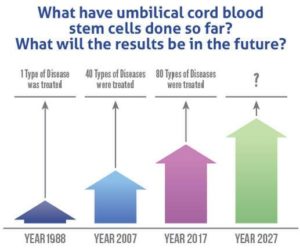Cord Blood Awareness Month is July
The Office of Disease Prevention and Health Promotion designates specific National Health Observances (NHO) dedicated to raising awareness about important health topics. Towards this goal, July has been declared “Cord Blood Awareness Month.” Although people benefit from cord blood banking every day, this NHO provides a special opportunity to highlight the significant contributions made through stem cell research, trials, and treatment.
Treatments
Stem cells are at the forefront of one of the most fascinating and revolutionary areas of biology today. To date, there are more than 80 diseases being treated with umbilical cord blood and tissue. The list of diseases that are treatable with cord blood include stem cell disorders, acute and chronic forms of leukemia, myeloproliferative disorders, and many more.
Clinical Trials
With a very promising future, clinical trials using cord blood stem cells are being conducted for neurological, cardiovascular, and auto-immune disorders. Some of the common diseases that have clinical trials in Phase 1 and Phase 2 include autism, cerebral palsy, and diabetes. There are also promising clinical trials for acquired hearing loss, pre-/peri-natal stroke, and traumatic brain injury.
Cord Blood Banking
Cord blood banking provides a simple process of safely and securely storing the blood within your child’s umbilical cord, as well as the tissue from the cord itself. Parents have the option of banking their baby’s cord blood with a public cord blood bank or a private cord blood bank.
Public cord blood banking is free and will provide life-saving benefits to a family in need. Once you donate your cord blood, however, you no longer have rights to those stem cells. If your child or family member is in need of cord blood stem cells, there is no guarantee that you or children can use their own cells. With private cord blood banking, there are fees but you own the cells. Your full rights to use it are preserved, and it is always immediately available to you.
A Perfect Match
One of the key benefits of using a private cord blood bank is the ability to provide a perfect match, since your child will be getting their own cells. Cord blood banking is especially vital for minorities and those of mixed race, where matching can be difficult using other stem cells from bone marrow or circulatory blood. Certain diseases also either depend upon, or greatly benefit from, using your own (autologous) cells. Luckily, it is easy to bank umbilical cord blood with New England Cord Blood Bank during Cord Blood Awareness Month and all year round.

